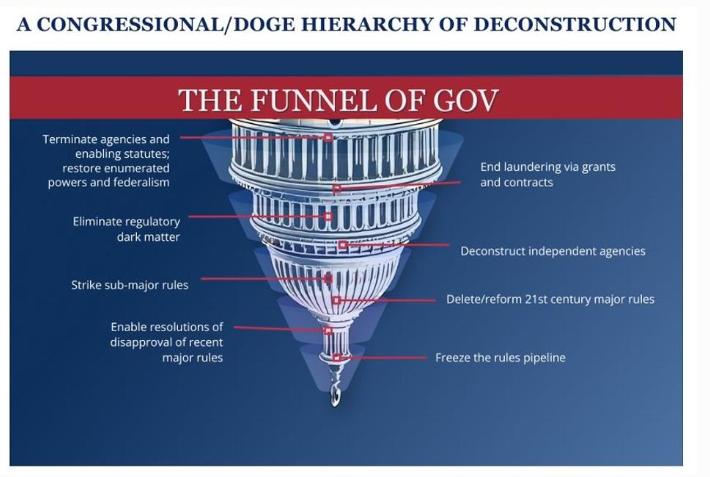$1 Trillion And Counting: Do Federal Grants Sabotage Regulatory Reform?
There’s been much attention to Donald Trump’s streamlining and “deconstruction” of conventional notice-and-comment regulation this year – a campaign that includes Congressional Review Act resolutions of disapproval overturning 16 late-term Biden regulations. Yet it’s notable that both houses of Congress have not come together on general regulatory process reform.

In the mid-1990s, state and local officials, concerns that their priorities were getting undermined by unfunded federal mandates, joined with small business to protest red tape. That rare, now almost unthinkable, bipartisan push produced several major reforms – signed into law by none other than Bill Clinton:
- Unfunded Mandates Reform Act (1995): Required disclosure of costs of certain federal mandates on businesses and state, local, and tribal governments;
- Paperwork Reduction Act Amendments (1995): Aimed to improve federal information management and curb paperwork-hour burdens on individuals, businesses and governments;
- Small Business Regulatory Enforcement Fairness Act (1996): Expanded small-business voice in rulemaking and created an ombudsman to help challenge overreach;
- Congressional Review Act (1996, part of SBREFA): Allowed Congress to review and nullify new federal regulations by joint resolution;
- Regulatory Right-to-Know Act (1998): Required an annual accounting of total regulatory costs and benefits by the Office of Management and Budget;
- Truth in Regulating Act (2000): A pilot program that authorized the Government Accountability Office to independently evaluate economically significant federal rules.
While many of these contain loopholes or are simply disregarded, we now see the executive branch pursuing an unprecedented streamlining of conventional rulemaking. What’s missing is outside pressure – like that of the mid-1990s – to push Congress to make reforms such as Trump’s “one-in, ten-out” cost containment rule permanent.
To be sure, bills have been introduced to do just that. Sen. Joni Ernst’s Searching for and Cutting Regulations that are Unnecessarily Burdensome (SCRUB ) Act would codify elements of the Trump and Department of Government Efficiency (DOGE) initiatives. The Guidance Out of Darkness (GOOD) Act would create permanent online portals for disclosure of sub-regulatory guidance documents, similar to portals established during Trump 1.0 that Biden revoked.
But there’s been little traction to move such bills to Trump’s desk. A stripped-down version of the REINS Act, which would have required congressional approval of certain regulations, was dropped from the “One Big Beautiful Bill” on procedural grounds; but so was more funding for the Office of Management and Budget to perform regulatory review.
Read more at Forbes
